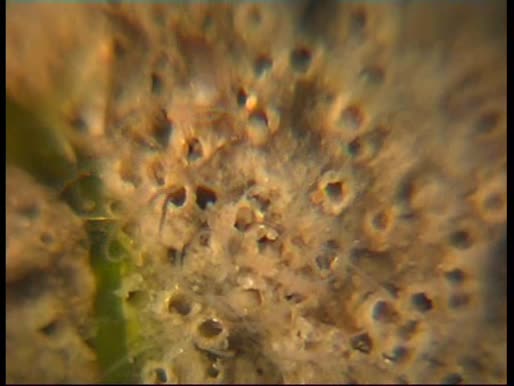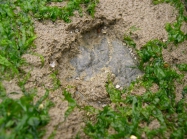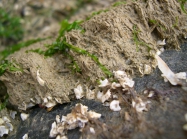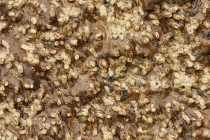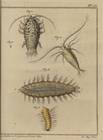
| Intro | | Search taxa | | Browse taxa | | Distributions | | Terminology | | References | | Statistics | | Online sources | | Tutorial | | Log in |
MSBIAS taxon detailsPolydora ciliata (Johnston, 1838)
131141 (urn:lsid:marinespecies.org:taxname:131141)
accepted
Species
marine,
recent only
(of ) Johnston, George. (1838). Miscellanea Zoologica. III. — The British Ariciadae. <em>Magazine of Zoology and Botany, Edinburgh.</em> 2: 63-73, plates II-III., available online at https://biodiversitylibrary.org/page/40025966
page(s): 67-68, plate III figs. 1-6 [details]
Read, G.; Fauchald, K. (Ed.) (2025). World Polychaeta Database. Polydora ciliata (Johnston, 1838). Accessed through: The UK Marine Environmental Data and Information Network (2025) Marine Species of the British Isles and Adjacent Seas (MSBIAS): a checklist of species derived from the UNICORN and Marine Recorder applications at: https://www.marinespecies.org/msbias/aphia.php?p=taxdetails&id=131141 on 2025-07-15
The UK Marine Environmental Data and Information Network (2025). Marine Species of the British Isles and Adjacent Seas (MSBIAS): a checklist of species derived from the UNICORN and Marine Recorder applications. Polydora ciliata (Johnston, 1838). Accessed at: https://www.marinespecies.org/msbias/aphia.php?p=taxdetails&id=131141 on 2025-07-15
Date action by
original description
(of ) Johnston, George. (1838). Miscellanea Zoologica. III. — The British Ariciadae. <em>Magazine of Zoology and Botany, Edinburgh.</em> 2: 63-73, plates II-III., available online at https://biodiversitylibrary.org/page/40025966
page(s): 67-68, plate III figs. 1-6 [details] context source (Introduced species) Molnar, J.L., R.L. Gamboa, C. Revenga & M.D. Spalding. (2008). Assessing the global threat of invasive species to marine biodiversity. <em>Frontiers in Ecology and the Environment.</em> 6(9): 485-492., available online at https://www.conservationgateway.org/ConservationPractices/Marine/Pages/marineinvasives.aspx [details] Available for editors context source (Schelde) Maris, T., O. Beauchard, S. Van Damme, E. Van den Bergh, S. Wijnhoven & P. Meire. (2013). Referentiematrices en Ecotoopoppervlaktes Annex bij de Evaluatiemethodiek Schelde-estuarium Studie naar “Ecotoopoppervlaktes en intactness index”. [Reference matrices and Ecotope areas Annex to the Evaluation methodology Scheldt estuary Study on “Ecotope areas and intactness index”. <em>Monitor Taskforce Publication Series, 2013-01. NIOZ: Yerseke.</em> 35 pp. (look up in IMIS) [details] additional source Integrated Taxonomic Information System (ITIS). , available online at http://www.itis.gov [details] additional source Hartmann-Schröder, G. (1996). Annelida, Borstenwürmer, Polychaeta [Annelida, bristleworms, Polychaeta]. <em>2nd revised ed. The fauna of Germany and adjacent seas with their characteristics and ecology, 58. Gustav Fischer: Jena, Germany. ISBN 3-437-35038-2.</em> 648 pp. (look up in IMIS) [details] Available for editors additional source Bellan, G. (2001). Polychaeta, <i>in</i>: Costello, M.J. <i>et al.</i> (Ed.) (2001). European register of marine species: a check-list of the marine species in Europe and a bibliography of guides to their identification. <em>Collection Patrimoines Naturels.</em> 50: 214-231. (look up in IMIS) [details] additional source Bromley, J.E.C. & J.S. Bleakney. (1985). Keys to the fauna and flora of Minas Basin. <em>National Research Council of Canada Report, Halifax, N.S.</em> 24119: 366 PP. [details] additional source Brunel, P., L. Bosse & G. Lamarche. (1998). Catalogue of the marine invertebrates of the estuary and Gulf of St. Lawrence. <em>Canadian Special Publication of Fisheries and Aquatic Sciences, 126.</em> 405 pp. (look up in IMIS) [details] Available for editors additional source Gosner, K. L. (1971). Guide to identification of marine and estuarine invertebrates: Cape Hatteras to the Bay of Fundy. <em>John Wiley & Sons, Inc., London.</em> 693 pp. [pdf copepod and branchiuran :445-455]. (look up in IMIS) [details] Available for editors additional source Day, J. H. (1967). [Sedentaria] A monograph on the Polychaeta of Southern Africa. Part 2. Sedentaria. British Museum (Natural History), London. pp. 459–842., available online at http://www.biodiversitylibrary.org/bibliography/8596 [details] additional source Muller, Y. (2004). Faune et flore du littoral du Nord, du Pas-de-Calais et de la Belgique: inventaire. [Coastal fauna and flora of the Nord, Pas-de-Calais and Belgium: inventory]. <em>Commission Régionale de Biologie Région Nord Pas-de-Calais: France.</em> 307 pp., available online at http://www.vliz.be/imisdocs/publications/145561.pdf [details] additional source Fauvel, P. (1927). Polychètes sédentaires. Addenda aux errantes, Arachiannélides, Myzostomaires. <em>Faune de France Volume 16. Paul Lechevalier. Paris.</em> 1-494., available online at http://www.faunedefrance.org/bibliotheque/docs/P.FAUVEL(FdeFr16)Polychetes-sendentaires.pdf [details] additional source Hartman, Olga. (1959). Catalogue of the Polychaetous Annelids of the World. Parts 1 and 2. <em>Allan Hancock Foundation Occasional Paper.</em> 23: 1-628. [details] Available for editors additional source McIntosh, William Carmichel. (1915). Polychaeta, Opheliidae to Ammocharidae. <em>A Monograph of the British Marine Annelids.</em> The Ray Society, London, 3 (1): i-viii, 1-368 (text)., available online at https://biodiversitylibrary.org/page/38532650 [details] additional source Mesnil, F. (1896). Études de morphologie externe chez les Annélides. I. Les Spionidiens des côtes de la Manche. <em>Bulletin Scientifique de la France et de la Belgique.</em> 29: 110-287, plates VII-XV., available online at https://biodiversitylibrary.org/page/10726590 [details] additional source Wilson, R.S.; Hutchings, P.A. and Glasby, C.J. (eds) 2003. List of Polychaete species introduced to Australia. Polychaetes: An Interactive Identification Guide. CSIRO Publishing, Melbourne [details] additional source Kendall, Michael A. (1980). Variations in some morphological characteristics of Polydora ciliata (Johnston). <em>Journal of Natural History.</em> 14(3): 405-411., available online at https://doi.org/10.1080/00222938000770351 [details] additional source Wilson, Douglas P. (1928). The larvae of Polydora ciliata Johnston and Polydora hoplura Claparede. <em>Journal of the Marine Biological Association of the United Kingdom.</em> 15(2): 567-603., available online at https://doi.org/10.1017/S0025315400009553 note: The P. ciliata came from oyster shell borings and thus may not have been P. ciliata [details] Available for editors additional source Radashevsky, V.I.; Pankova, V.V. (2006). The morphology of two sibling sympatric <i>Polydora</i> species (Polychaeta: Spionidae) from the Sea of Japan. <em>Journal of the Marine Biological Association of the United Kingdom.</em> 86(2): 245-252., available online at https://doi.org/10.1017/s0025315406013099 [details] additional source Liu, J.Y. [Ruiyu] (ed.). (2008). Checklist of marine biota of China seas. <em>China Science Press.</em> 1267 pp. (look up in IMIS) [details] Available for editors additional source Trott, T. J. (2004). Cobscook Bay inventory: a historical checklist of marine invertebrates spanning 162 years. <em>Northeastern Naturalist.</em> 11, 261-324., available online at http://www.gulfofmaine.org/kb/files/9793/TROTT-Cobscook%20List.pdf [details] Available for editors additional source Mustaquim, Javed. (1986). Morphological variation in Polydora ciliata complex (Polychaeta: Annelida). <em>Zoological Journal of the Linnean Society.</em> 86(1): 75-88., available online at https://doi.org/10.1111/j.1096-3642.1986.tb01808.x [details]  Present Present  Inaccurate Inaccurate  Introduced: alien Introduced: alien  Containing type locality Containing type locality
BIOTIC
Marine Life Information Network - UK To Biodiversity Heritage Library (132 publications) To European Nucleotide Archive, ENA (Polydora ciliata) To GenBank (2 nucleotides; 0 proteins) To Global Biotic Interactions (GloBI) To PESI To USNM Invertebrate Zoology Annelida Collection (20 records) To Yale Peabody Museum of Natural History (YPM IZ 081279) To ITIS |


